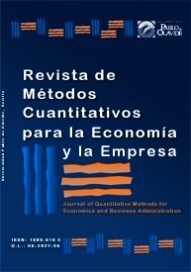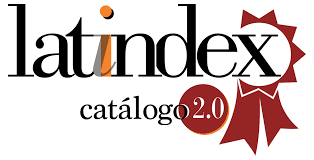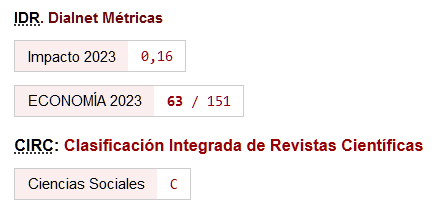Organizational talent mapping: A hybrid model integrating the nine-box matrix and the TOPSIS multicriteria method
DOI:
https://doi.org/10.46661/rev.metodoscuant.econ.empresa.10580Keywords:
multicriteria decision support, TOPSIS method, nine box matrix, talent mapping, talentAbstract
Talent management is a strategic function, and its objectives are to attract, develop and retain talented employees at different levels of the organization. One of its practices is to have a talent map allowing a general view of the availability in the company. The aim of this work is to present a hybrid model for talent mapping, based on the integration of the Nine Box matrix and the multicriteria method TOPSIS, to improve decision-making in talent management.
The nine-box matrix provides visual information about talent, using performance and potential as axes. This tool provides abundant information; however, it is insufficient to make decisions within the same category. For this reason, the evaluation process was integrated by applying TOPSIS, which allows for addressing problem resolution with multiple alternatives considering various criteria. The method produces a ranking of employees, providing valuable information for analysis and decision-making within each box.
Once both tools are integrated, it is concluded that the methodologies provide complementary information. The matrix groups employees into each box, while TOPSIS facilitates specific decisions by helping to prioritize within the same box.
We recommend the integrated use of both methods as it is effective in managing the complexity of talent management decisions.
To the best of our knowledge, this is one of the first applications combining both tools for talent management in service-oriented companies in Argentina.
Downloads
References
Ardielli, E. (2019). Use of TOPSIS Method for Assessing of Good Governance in European Union Countries. Review of Economic Perspectives. 19 (3), 211-231. DOI: 10.2478/revecp-2019-0012 https://doi.org/10.2478/revecp-2019-0012
Ceballos, B., Lamata, M. T., Pelta, D., Puerta, J. M., Gámez, J. A., Dorronsoro, B., y Galar, M. (2015). Una comparativa de modelos de decisión multi-criterio difusos. In Actas de la XVI Conferencia CAEPIA (pp. 459-469).
Chiavenato, I. (2009). Gestión del talento humano. Ciudad de México, México: Tercera Edición, Editorial Mc Graw.
Cuesta Calderón, X. (2015). Proceso de gestión del talento en la unidad financiera del grupo industrial Graiman. (Tesis de Maestría). Universidad de Azuay. Ecuador.
De Meuse, K. P, Dai, G., Hallenbeck, G. S. y Tang, K. (2008). Using learning agility to identify high potential around the world. Korn/Ferry Institute, 1-22. https://doi.org/10.1037/e518422013-130
Ferreira da Costa, C., Rituay Trujillo, P., Campos Trigoso, J. y De Oliveira, M. (2019). Plan de sucesión de personas en empresas del sector financiero en Brasil. Revista de Ciencias Sociales (Ve), 24 (4), 209-219. https://doi.org/10.31876/rcs.v25i4.30528
Finkelstein, L. M., Costanza, D. P. y Goodwin, G. F. (2018). Do your high potentials have potential? The impact of individual differences and designation on leader success. Personnel Psychology, 71(1), 3-22. https://doi.org/10.1111/peps.12225
Jooss, S., McDonnell, A. y Burbach, R. (2019) Talent designation in practice: an equation of high potential, performance and mobility. International Journal of Human Resource Management, 32(21), 4551-4577. https://doi.org/10.1080/09585192.2019.1686651
Hatum, A. (2011). El futuro del talento. Gestión del talento para sobrevivir la crisis. Buenos Aires, Argentina: Editorial Temas.
Jericó, P. (2008). La nueva gestión del talento. Construyendo compromiso. Madrid, España: Pearson Educación.
Koay, S. (2006). Succession planning and identifying high potential talent. The Cornell Center for Advanced Human Resource Studies (CAHRS). Recuperado de https://docplayer.net/1317674-Succession-planning-and-identifying-high-potential-talent.html.
Lombardo, M. y Eichinger, R. (2000). High potentials as high learners. Human Resource Management, 39(4), 321-329.
https://doi.org/10.1002/1099-050X(200024)39:4<321::AID-HRM4>3.0.CO;2-1
Olson, D. L. (2004). Comparison of weights in TOPSIS models. Mathematical and Computer Modelling, 40(7-8), 721-727.
https://doi.org/10.1016/j.mcm.2004.10.003
Ruddy, T. y Anand, P. (2010). Managing talent in global organizations. En Silzer, R. y Dowell, B. E. (2010). Strategy-driven talent management: A leadership imperative (pp. 549-593). San Francisco, EEUU: Jossey-Bass.
Saracho, J.(2011). Talento organizacional. Real Editores, Santiago de Chile, Chile.
Silzer, R. y Church, A. H. (2009). The pearls and perils of identifying potential. Industrial and Organizational Psychology, 2(4), 377-412.
https://doi.org/10.1111/j.1754-9434.2009.01163.x
Silzer, R. y Church, A.H. (2010). Identifying and assessing high-potential talent: Current organizational practices. En Silzer, R. y Dowell, B. E. (2010). Strategy-driven talent management: A leadership imperative (pp. 213-280). San Francisco, EEUU: Jossey-Bass.
Tsao, C. T. (2003). Evaluating investment values of stocks using a fuzzy TOPSIS approach. Journal of Information and Optimization Sciences, 24(2), 373-396. https://doi.org/10.1080/02522667.2003.10699573
Vera-Barbosa, A. y Blanco Ariza, A. (2019). Modelo para la gestión del talento humano en las pymes del sector servicios de Barranquilla, Colombia. Innovar, 29 (74), 25-44. https://doi.org/10.15446/innovar.v29n74.82059
Vincke, P. (1992) Decision Aid. John Wiley & Sons Ltd. Inglaterra.
Widianta, M. M. D., Rizaldi, T., Setyohadi, D. P. S., y Riskiawan, H. Y. (2018). Comparison of multi-criteria decision support methods (AHP, TOPSIS, SAW & PROMENTHEE) for employee placement. In Journal of Physics: Conference Series (Vol. 953, p. 012116). IOP Publishing.
https://doi.org/10.1088/1742-6596/953/1/012116
Yoon K. y Hwang C. (1981). Multiple Criteria Attribute Decision Making: An Introduction. Sage University Paper Series on Quantitative Applications in the Social Sciences, 07-104. Thousand Oaks, CA: Sages.
Zhang, P., Zhang, J., Ge, R., Zhou, Q., y Chen, Y. (2023). The impact of agricultural international trade on agro-ecological environment based on TOPSIS model. Applied Mathematics and Nonlinear Sciences, 8(2), 1931-1940. https://doi.org/10.2478/amns.2023.1.00297
Published
How to Cite
Issue
Section
License
Copyright (c) 2024 Sofia Carla Cortaberria, Miguel Angel Curchod

This work is licensed under a Creative Commons Attribution-ShareAlike 4.0 International License.
Submission of manuscripts implies that the work described has not been published before (except in the form of an abstract or as part of thesis), that it is not under consideration for publication elsewhere and that, in case of acceptance, the authors agree to automatic transfer of the copyright to the Journal for its publication and dissemination. Authors retain the authors' right to use and share the article according to a personal or instutional use or scholarly sharing purposes; in addition, they retain patent, trademark and other intellectual property rights (including research data).
All the articles are published in the Journal under the Creative Commons license CC-BY-SA (Attribution-ShareAlike). It is allowed a commercial use of the work (always including the author attribution) and other derivative works, which must be released under the same license as the original work.
Up to Volume 21, this Journal has been licensing the articles under the Creative Commons license CC-BY-SA 3.0 ES. Starting from Volume 22, the Creative Commons license CC-BY-SA 4.0 is used.










